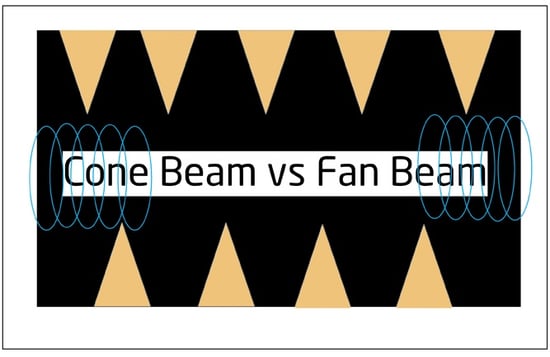The Traditional CT scanner and the Cone Beam CT scanner are two ways of doing the same thing-scanning-with each method  claiming its fair share of advantages and disadvantages. When people think of a CT scan, they generally envision a huge machine that takes up a whole room scanning their entire body. Thanks to ever dynamic technology, there is much more than ordinary in the field of CT scans. While both scanners undertake the same basic function, there are technical differences that can influence your preference as well as practitioners’. Let us look at the Traditional vs. the Cone Beam CT scanner.
claiming its fair share of advantages and disadvantages. When people think of a CT scan, they generally envision a huge machine that takes up a whole room scanning their entire body. Thanks to ever dynamic technology, there is much more than ordinary in the field of CT scans. While both scanners undertake the same basic function, there are technical differences that can influence your preference as well as practitioners’. Let us look at the Traditional vs. the Cone Beam CT scanner.
CT scan (computed tomography scan)
A CT scan is basically pictures of internal body structures generated by a computer from multiple X-ray images. The x-rays utilize radiation from a radioactive contrast injected into the body to create cross-sectional images. There are various reasons why you may be required to take a CT scan like diagnosis, surgery, among others.
Cone Beam CT (CBCT) scanner vs. Traditional CT scanner
A CBCT scanner uses a cone beam radiating from an X-ray source in the shape of a cone covering large volume with one single rotation about the patient. The X-ray images are reconstructed by use of algorithms to come up with 3D high resolution images. An example of a CBCT scanner is i-CAT.
On the other hand, a conventional CT scanner uses a fan beam in which transmitted radiation is in the form of a helix/spiral. The images are interpolated into image detectors arranged around the patient in an arc where only single slice images per scan can be produced. In a single breath hold, considerable regions of the body can be imaged. It is also possible to obtain 3D images from conventional CT scans.
A traditional CT scanner utilizes a high-output anode X-ray tube that rotates whereas a CBCT scanner utilizes a medical fluoroscopy tube that is low-power.
There is also a huge difference between the two scanners based on the amount of radiation exposure patients are subjected to. A CBCT has quicker motion compared to the spiral motion of a traditional CT scanner. It is therefore possible to conduct a CT scan using a CBCT scanner with lower doses of radiation. An example can be found in panoramic radiography. A typical CT scan will require separate maxilla and mandible scans which expose the patient to 200-300 times the required radiation for this radiography. If both jaws are scanned, the exposure doubles. A CBCT scans both the maxilla and mandible at the same time hence reducing exposure.
The required scanning posture is also different for the two scanners. In conventional CT scanners, the patient must lie down which is not the case for all CBCT scanners. Using the same example of panoramic radiography, in a traditional CT scan, a patient’s jaw must be directly parallel to the X-ray beam direction. Any slight deviation causes error. In a CBCT scan however, orientation does not affect the final image as the entire field information is captured at a go. This upholds accuracy.
Conclusion
Data from these scans is mostly used by specialists in:
- Dental
- ENT-ears, nose, and throat
- Maxillofacial region
The U.S. has witnessed an increase in the use of CBCT scanners especially among dental professionals. As a matter of fact, APW Dental and Imaging Services LLC exclusively use CBCT scanning machines. However, most hospitals and imaging centers sill use the traditional CT scanner. It still remains to be seen how CBCT scanners will be adopted by medical specialists but until then, the traditional CT scanner is the preferred choice by many.
If you have additional questions about CT Scanners, talk to the experts at Atlantis Worldwide. We can help you find the perfect refurbished or used CT Scanner for your needs and budget. Contact Us Today!
Some blogs you may have missed:
- Plan Ahead For Medical Imaging Equipment Purchases
- 2016: The Year of Improving Your C-Arm
- Changing the Game: Xbox to X-Ray
- 7 Benefits of Medical Imaging File Sharing
- 3D Printing in Medical Imaging & Healthcare
Meet the author: Vikki Harmonay





